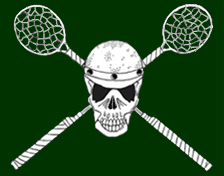Nationals Draw Sparks ‘Cup or Plate’ Controversy
Nationals hasn’t even started yet but already there is a heated debate. Some clubs have voiced concerns over the structuring of the grades, which has seen a lot of teams move up into higher grades than they have played all year. This is somewhat strange as it used to be that at Nationals teams would often get pushed down as all the best players come out to play!
The UKPA wanted to play a ‘super eights’ format so that each grade had eight teams in it and could be played in a cup and plate format (which allows us to use all our columns on our league but we don’t think that’s the reason they did it). Unfortunately, even the most optimistic fan wouldn’t say there are eight true A grade teams in the UK, nor eight B grade teams. Therefore, to make up the numbers the top B grade teams, such as the Northern Lions (who have won a number of B grade this season), and the Kent B grade side have disappeared into A grade where they probably do not stand too much chance (though the Lions do have Shaye Williams so there is always hope for them). The spread of handicaps in the A grade is 32; Highlanders topping the grade on 89 and Kent bringing up the rear on 57. That is pretty big spread and some would say too big. It is, after all, the equivalent of five extra handicap points per player.
The B grade is made up of three established B grade teams, Arden , Liscombe and the Welsh Dragons and then five C grade teams; most of which were planning on trying to win the C this year. The end result is a spread in the B of 33, much the same as the A. The spread, however, is even more noticeable in B than A. This is due to the sudden, large drop in handicaps between the top three teams and the C grade teams brought up, at least in A the handicaps descend in fairly even steps.
The C grade has been topped up with D grade teams and the D grade is to be played as a round robin as only four teams are left over. The Juniors and Primary Juniors are actually fairly well matched but this is because of the age limits.
The UKPA will argue that the lower teams in each grade can play off for the plate but many people might say that winning the B grade is a lot better than the A grade plate. Plates are always somewhat poorly thought of, as by winning a plate the team is basically confirming they were the fifth best team in the grade (as the top four teams will have gone into the cup). This is not necessarily the truth but it is a prevalent mindset. Plus, by establishing a Cup and Plate in every division you are effectively splitting the grade in two. The A grade plate is basically a second B grade and the B grade plate effectively the C grade.
One player said, “My team has no real chance of winning our first match and getting into the Cup so do we even bother trying? Is it better just to simply sit on the T and let the other team win and not risk the horses or should we at least try for pride’s sake? Even if we won the first match there is no real chance of winning the Cup but maybe we could win the plate. Do we really want a plate though? Cups just look better!”
However, maybe playing the Nationals in this format will change this mindset, maybe Plates will become more highly thought of, ultimately only time will tell. Whether people will like this Nationals format depends a lot on whether they see it being a true reflection of polocrosse within the UK or whether instead a truer reflection was given by the earlier tournaments in the season, where the spread of handicaps in each grade was kept smaller and the way the grade was played depending on the number of teams in it, rather than simply placing teams in a pre-arranged format.

Comments - No Responses to “Nationals Draw Sparks ‘Cup or Plate’ Controversy”
Sure is empty down here...